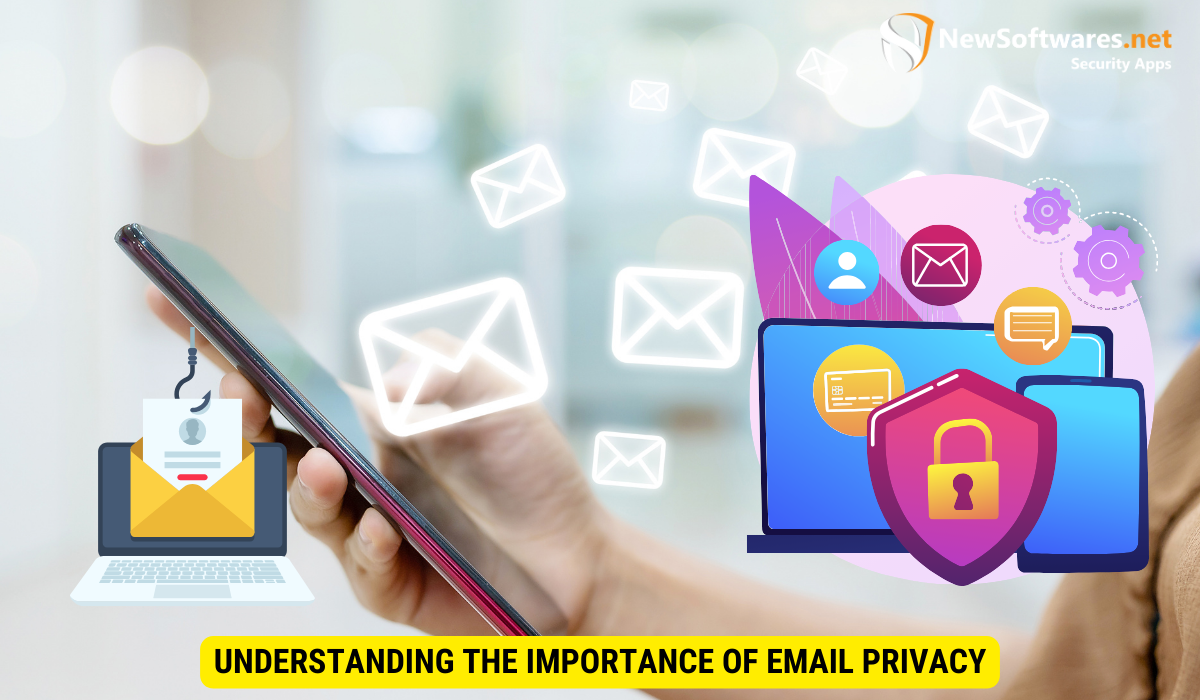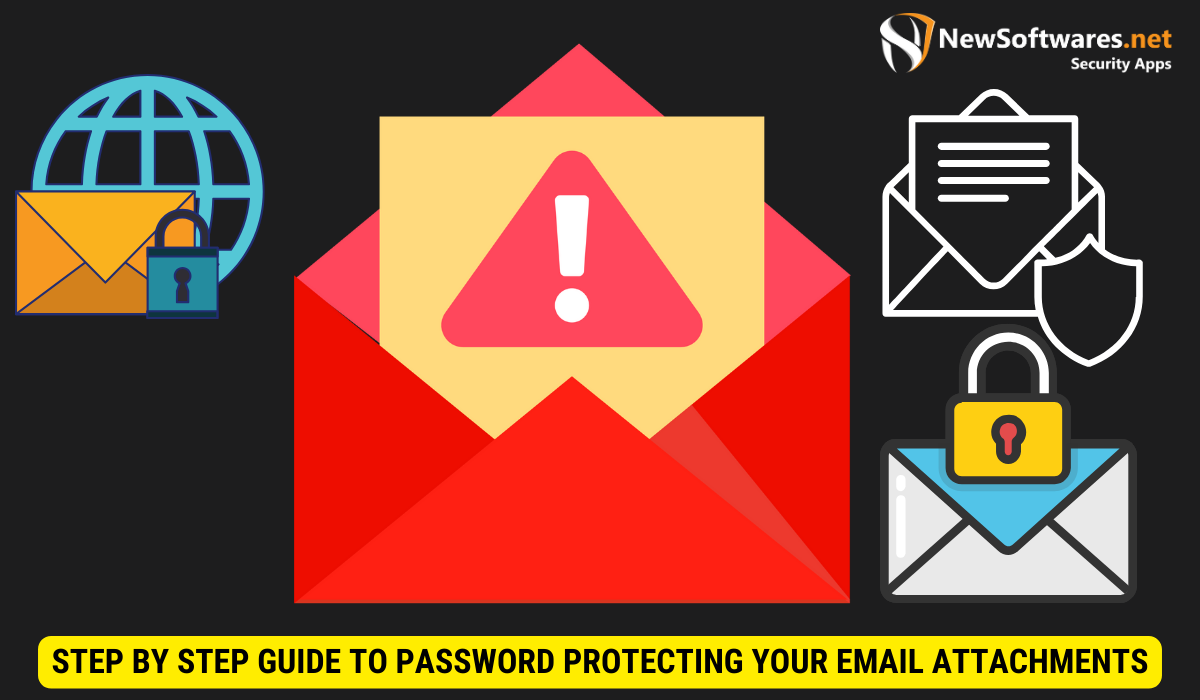Protecting your email attachments with password protection adds an additional layer of security, ensuring that only authorized recipients can access sensitive information. By implementing strong passwords, encrypting your attachments, and following best practices, you can mitigate the risk of unauthorized access or data breaches.
Email privacy is a paramount concern for individuals and businesses alike. With the ever-increasing risk of data breaches and cyber threats, it is crucial to take proactive measures to protect sensitive information. One effective way to safeguard your email attachments is by using password protection. I will explore the importance of email privacy, the risks of unprotected attachments, the role of password protection, and provide a step-by-step guide on how to password protect your email attachments. We will also discuss best practices for password protection and additional measures to enhance email security.
Understanding the Importance of Email Privacy

Emails have become a primary means of communication, both for personal and professional purposes. However, without proper privacy measures, emails can be vulnerable to unauthorized access, interception, and misuse. Protecting the privacy of your email attachments is crucial to prevent sensitive information from falling into the wrong hands.
The Risks of Unprotected Email Attachments
When you send an email attachment without password protection, it becomes susceptible to interception or unauthorized access. This puts your confidential data, such as financial documents, personal information, or sensitive business files, at risk. Cybercriminals can exploit this vulnerability to gain access to your information and use it for fraudulent activities or identity theft.
The Role of Password Protection in Email Security
Password protection acts as an additional layer of security for your email attachments. It ensures that only authorized recipients with the correct password can access the files. By implementing password protection, you significantly reduce the risk of data breaches and unauthorized access, thus safeguarding your sensitive information.
However, it is important to choose a strong and unique password for your email attachments. Avoid using common passwords or easily guessable combinations, such as your birthdate or the word “password.” Instead, opt for a combination of uppercase and lowercase letters, numbers, and special characters. Additionally, consider changing your password regularly to further enhance the security of your email attachments.
Furthermore, it is worth noting that password protection alone may not be sufficient to ensure complete email privacy. It is essential to use a secure email service provider that employs robust encryption protocols. Encryption scrambles your email attachments, making them unreadable to anyone without the decryption key. This adds an extra layer of protection, making it extremely difficult for unauthorized individuals to access your sensitive information.
Basics of Password Protection for Email Attachments
Before diving into the process of password protecting your email attachments, it is essential to understand the basic concepts associated with this security measure.
When it comes to safeguarding sensitive information, password protection plays a crucial role. It acts as a digital lock, ensuring that only authorized individuals can access the contents of your email attachments. By adding a password to your files, you add an extra layer of security, preventing unauthorized access and keeping your confidential information safe.
What is Password Protection?
Password protection involves adding a password to your email attachments. This password must be shared separately with the intended recipient and should not be included in the email itself. The recipient will need to enter the correct password to open and access the protected file.
Think of it as a secret code that grants access to the hidden treasure trove of information within the attachment. Without the correct password, the file remains locked, safeguarding its contents from prying eyes.
Different Levels of Password Protection
There are various levels of password protection available, depending on the software or email client you are using. Some programs allow you to set a password required for opening the attachment, while others offer the option to restrict editing, printing, or copying of the file. Choose the level of protection that best suits your needs.
For instance, if you only want the recipient to view the attachment without making any changes, you can opt for a read-only password protection. This ensures that the file remains unaltered and serves as a reference document. On the other hand, if you want to grant editing privileges to the recipient, you can choose a password protection option that allows modifications while still maintaining the overall security of the file.
By tailoring the level of password protection to your specific requirements, you can strike a balance between accessibility and security. It empowers you to control who can access and manipulate your email attachments, ensuring that your valuable information remains in the right hands.
Step-by-Step Guide to Password Protecting Your Email Attachments

Now that you understand the significance of password protection, let’s walk through the step-by-step process of implementing this security measure for your email attachments.
Choosing the Right Password
The first step is to select a strong, unique password for your attachment. Ensure that it is not easily guessable and includes a combination of uppercase and lowercase letters, numbers, and special characters. Avoid using common passwords or personal information that could be easily obtained.
Encrypting Your Email Attachments
Encrypting your email attachments provides an extra layer of security. This process converts the readable content into a scrambled format, making it unreadable for anyone without the decryption key. Many email clients offer built-in encryption options or third-party software can be used for this purpose.
Best Practices for Password Protection
While implementing password protection is a significant step towards enhancing email security, it is equally important to follow best practices to ensure maximum effectiveness.
Regularly Updating Your Passwords
Make it a habit to change your passwords regularly. By doing so, you mitigate the risk of a compromised password being used for unauthorized access. Opt for unique passwords for different accounts and avoid reusing passwords across multiple platforms.
Avoiding Common Password Mistakes
When creating a password, refrain from using easily guessable information such as birthdays, names, or common phrases. Additionally, avoid using dictionary words or consecutive number sequences. These common password mistakes make it easier for cyber attackers to crack your password and gain access to your sensitive information.
Additional Measures to Enhance Email Security
In addition to password protection, there are other measures you can take to further enhance the security of your email attachments.
Two-Factor Authentication for Emails
Enabling two-factor authentication adds an extra layer of security by requiring an additional verification step, such as a unique code sent to your mobile device, along with your password. This ensures that even if your password is compromised, an attacker would still need physical access to your mobile device to gain unauthorized entry.
Using Secure Email Providers
Consider using email service providers that prioritize security and privacy. Look for features like end-to-end encryption, strong spam filters, and built-in security protocols. These providers invest heavily in safeguarding your data and offer a safer environment for sending and receiving sensitive attachments.
By implementing password protection for your email attachments and following these best practices, you can significantly enhance the security and privacy of your communications. Remember, it is essential to stay proactive in safeguarding your information and continuously adapt to the evolving threat landscape.
Key Takeaways
- Email privacy is crucial to protect sensitive information from unauthorized access and interception.
- Unprotected email attachments are vulnerable to cyber threats and can lead to data breaches or identity theft.
- Password protection adds an extra layer of security, allowing only authorized recipients with the correct password to access the attachments.
- Choose strong passwords and consider encrypting your attachments for enhanced security.
- Regularly update your passwords and avoid common password mistakes to prevent unauthorized access.
FAQs
Can I password protect any type of attachment?
Yes, you can password protect any type of attachment, including documents, spreadsheets, presentations, and PDF files. Most software and email clients offer built-in options for password protection.
Can I use the same password for multiple attachments?
No, it is not recommended to use the same password for multiple attachments. Using unique passwords for each attachment enhances security and reduces the risk of unauthorized access to multiple files if one password is compromised.
Is encrypting my email attachments necessary if I already password protect them?
While password protection adds a layer of security, encrypting your email attachments provides an additional level of protection. Encryption ensures that even if the password is somehow compromised, the content remains unreadable without the decryption key.
How often should I update my passwords?
It is recommended to update your passwords regularly, ideally every few months. Regularly changing your passwords reduces the risk of unauthorized access and keeps your sensitive information secure.
What are some secure email providers?
There are several secure email providers available, such as ProtonMail, Tutanota, and Zoho Mail. These providers prioritize end-to-end encryption and offer additional security features to protect your emails and attachments.
Conclusion
Ensuring privacy is of utmost importance when it comes to email communications. By password protecting your email attachments, you can significantly reduce the risk of unauthorized access and protect sensitive information from falling into the wrong hands. Implement the steps outlined in this article, follow best practices for password protection, and consider additional measures like two-factor authentication and secure email providers to enhance the security of your email attachments.
